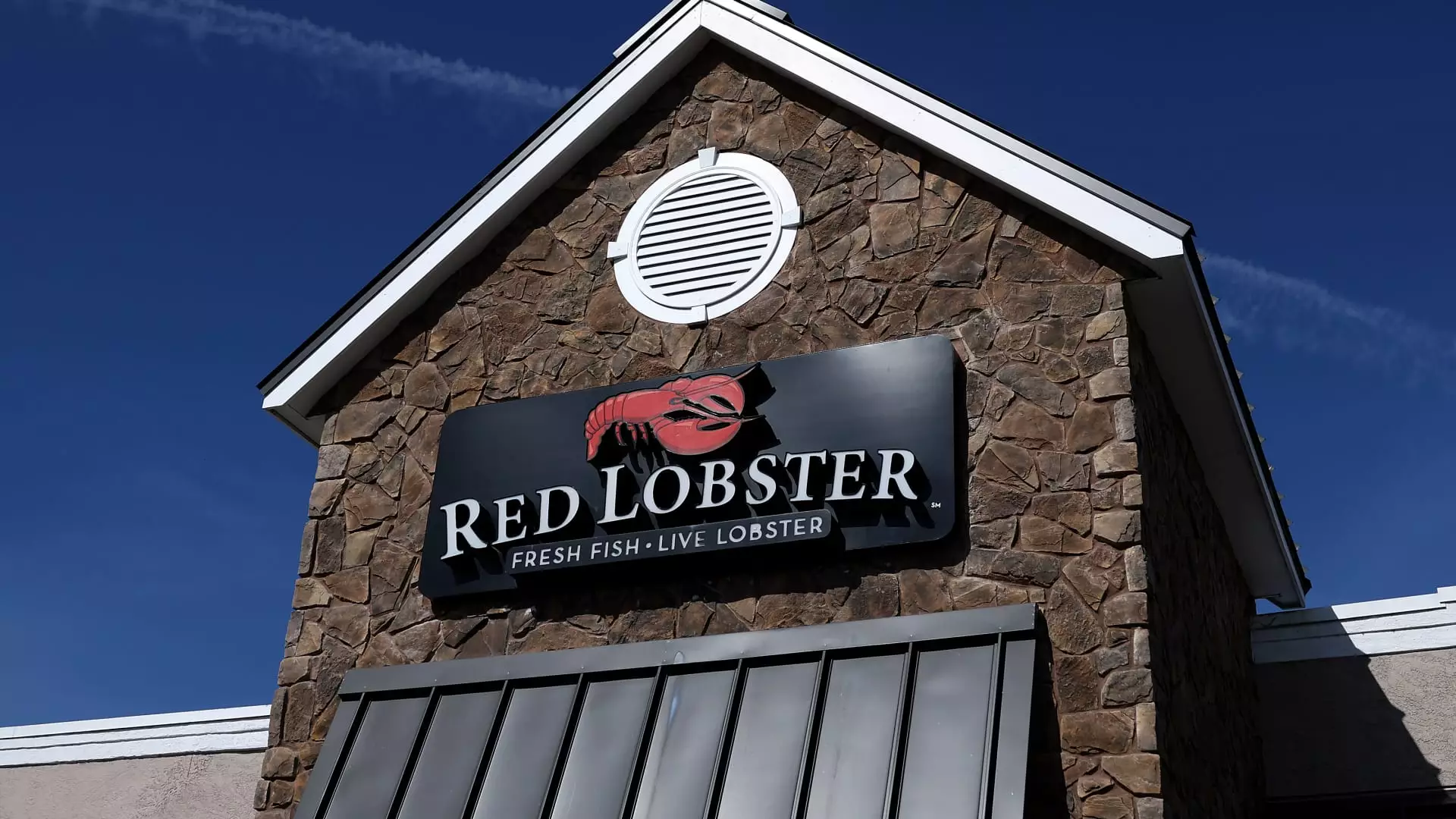Red Lobster, the popular seafood chain, has recently filed for Chapter 11 bankruptcy protection in an effort to slim down its operations and facilitate a sale. The company disclosed that it has received a stalking horse bid from its existing lenders to acquire the business, although they are open to higher bids from potential buyers. The decision to file for bankruptcy was influenced by a combination of factors including a challenging macroeconomic environment, an overextended restaurant footprint, unsuccessful strategic endeavors, and intensified competition within the industry.
Red Lobster’s financial woes can be traced back to its significant debt and long-term leases, which have burdened the company’s financial stability. The chain, which currently operates 551 locations in the U.S. and 27 in Canada, recently closed 93 underperforming restaurants and is looking to reject 108 leases in order to streamline its operations. With 36,000 employees, primarily in part-time roles, Red Lobster is aiming to address its financial and operational challenges through the restructuring process.
Established in 1968 and acquired by General Mills in 1970, Red Lobster became part of the Darden Restaurants portfolio in 1995 before being sold to private equity firm Golden Gate Capital. In 2016, Thai Union Group, a seafood supplier and vendor of Red Lobster, obtained a stake in the company. By 2020, Thai Union, along with members of Red Lobster management and investors under the alias Seafood Alliance, acquired Golden Gate’s remaining share. Despite surviving the pandemic, Red Lobster has experienced a decline in business, with a 30% drop in traffic since 2019.
The company’s struggles have been exacerbated by a lack of stability in its leadership, with multiple CEO changes in recent years. Fiscal reports from 2023 revealed a net loss of $76 million, partly attributed to a failed promotional campaign known as “endless shrimp.” The promotion, initially designed to boost sales, backfired as it led to increased costs for Red Lobster and potential conflicts of interest with its supplier, Thai Union Group. The chain’s reliance on a single supplier for shrimp resulted in higher expenses and possible pressure for in-store promotions that caused shortages.
Red Lobster’s decision to file for Chapter 11 bankruptcy protection reflects the ongoing challenges faced by the company due to financial strain, operational inefficiencies, and strategic missteps. As the chain navigates through this restructuring process and potential sale, addressing these underlying issues will be crucial for its long-term sustainability and growth in an increasingly competitive industry.

